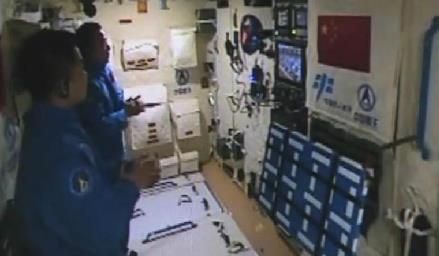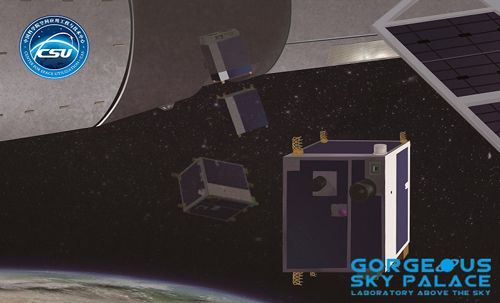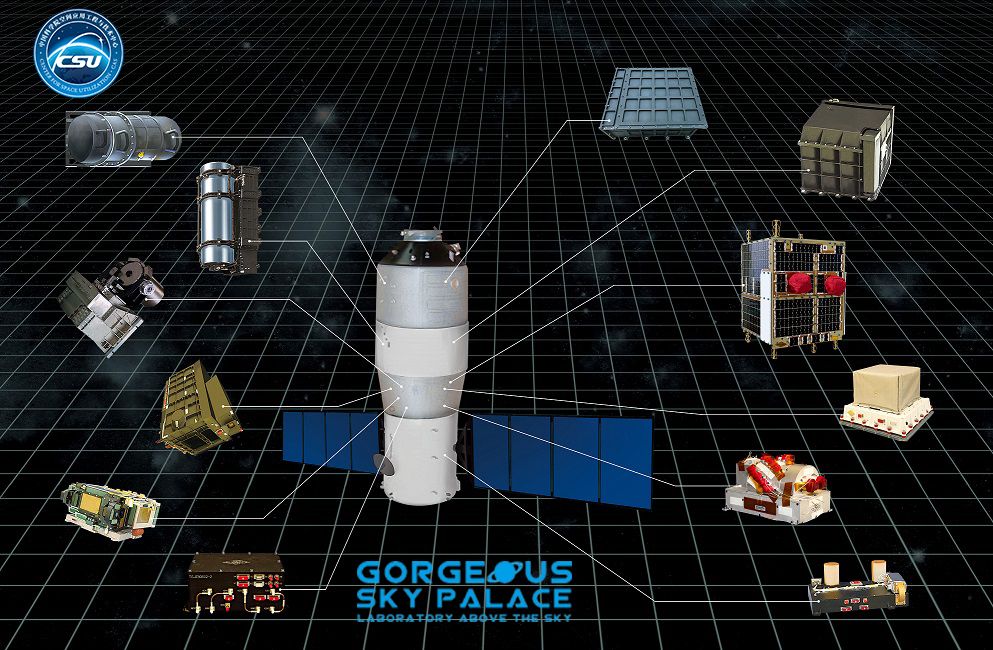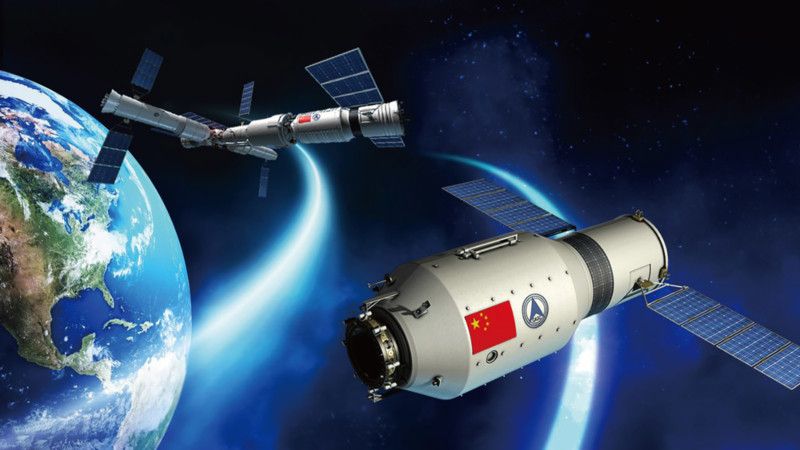
China's Tiangong-2 Space Lab Crew Launches Small Satellite

The two-man Shenzhou-11 crew of China's ongoing mission to the Tiangong-2 space lab has launched a small "accompanying" satellite, according to state media reports.
The 104-lb.(47 kilograms) satellite – which is about the size of a printer — was deployed from the Tiangong-2 space lab on Sunday (Oct. 23) at 7:31 a.m., local Beijing time.
Officials with China's Technology and Engineering Center for Space Utilization, under the Chinese Academy of Sciences, reported that the microsatellite is able to conduct efficient orbit control, process tasks autonomously and transmit data at high speeds. The newly-launched satellite has stronger capabilities compared with a small satellite that was dispatched during the three-person Shenzhou-7 spacecraft mission back in September 2008, according to the center. [China's Tiangong-2 Space Lab Mission in Pictures]

At the end of October, the satellite will orbit close to Tiangong-2 and the docked Shenzhou-11 spacecraft to take photos using ahigh-resolution camera. The accompanying satellite will also carry out space experiments with Tiangong-2, according to a description.
China's Shenzhou-11 spacecraft launched two astronauts — Jing Haipeng and Chen Dong — into space on Oct. 17 from the Jiuquan Satellite Launch Center. It docked with Tiangong-2 two days later.
Another task set for the Shenzhou-11 crew is a quantum key distribution experiment that will be conducted by the space travelers and scientists on Earth in an effort to carry out space-to-ground quantum communication. Last Friday (Oct. 21), the Shenzhou-11 crew The two carried out a brain-computer interaction experiment and an in-space plant cultivation experiment last Friday.

Plant cultivation
In a CCTV-Plus interview, Wang Longji, scientist, Environment Control and Life Support Lab, China Astronaut Research and Training Center explains: "First, we want to check the water control and nutrition transmission and measurement technologies. Second, we want to check the technologies for sowing seeds, pulling up unnecessary seedlings and looking after plants automatically while in orbit," Wang said. "Third, we want collect data concerning the volume of oxygen produced by photosynthesis, the harvest yield, and the plants' nutritional quality and edibility. Fourth, the plant cultivation experiment will bring happiness to the astronauts and improve their working efficiency and moods during their 30-day stay in space."
Get the Space.com Newsletter
Breaking space news, the latest updates on rocket launches, skywatching events and more!
According to Yang Liwei, nearly 40 experiments have been arranged for this space voyage, sixteen of which are related to aerospace medicine and four of which concern application practices.

"All the experiments are in preparation for our future space station," Yang said in a CCTV-Plus interview. "The space lab is built for our experimental needs and for us to accumulate experience. So, according to our arrangements, the tasks will be carried out one by one. The workload is really heavy. As the other experiments are gradually launched, the situation will become more and more complicated and varied for the two astronauts."
Leonard David is author of "Mars: Our Future on the Red Planet," to be published by National Geographic this October. The book is a companion to the National Geographic Channel six-part series coming in November. A longtime writer for Space.com, David has been reporting on the space industry for more than five decades. Follow us @Spacedotcom, Facebook or Google+. Originally published on Space.com.
Join our Space Forums to keep talking space on the latest missions, night sky and more! And if you have a news tip, correction or comment, let us know at: community@space.com.

Leonard David is an award-winning space journalist who has been reporting on space activities for more than 50 years. Currently writing as Space.com's Space Insider Columnist among his other projects, Leonard has authored numerous books on space exploration, Mars missions and more, with his latest being "Moon Rush: The New Space Race" published in 2019 by National Geographic. He also wrote "Mars: Our Future on the Red Planet" released in 2016 by National Geographic. Leonard has served as a correspondent for SpaceNews, Scientific American and Aerospace America for the AIAA. He has received many awards, including the first Ordway Award for Sustained Excellence in Spaceflight History in 2015 at the AAS Wernher von Braun Memorial Symposium. You can find out Leonard's latest project at his website and on Twitter.









